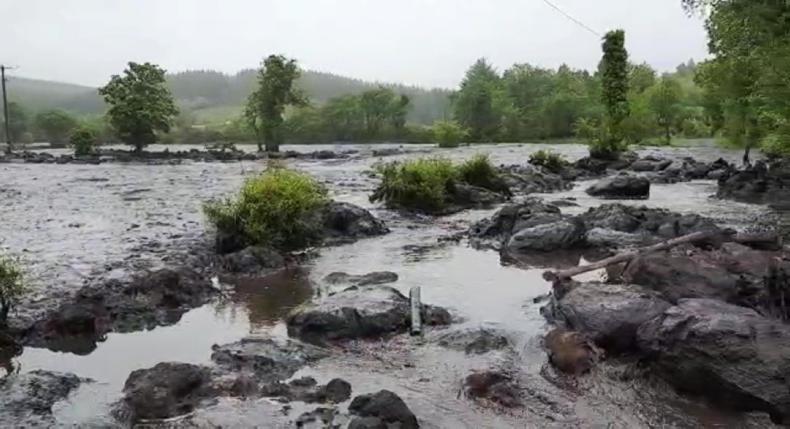Landslides are being triggered by extreme rainfall events, such as the landslide in Drumkeeran, Co Leitrim, last year and the landslide on the Inishowen Peninsula, Co Donegal, in 2017.
While the frequency of landslides has not increased, a Department of the Environment spokesperson has said that there is evidence to suggest that the “incidence of more significant failures has increased”.
“These are typically being triggered by extreme rainfall events, such as those that occurred in 2020 and in 2017 on the Inishowen Peninsula,” the spokesperson said.
Last year, the Geological Survey Ireland (GSI) recorded three landslides in Kerry, Leitrim and Donegal and to date in 2021 it has recorded one landslide in the Cuilcagh area of Cavan/Leitrim.
“It is likely that the extreme rainfall which preceded the landslide events in 2020 contributed significantly to the conditions necessary to instigate a landslide event of this nature.”
Leitrim landslide
The total length of the landslide in Drumkeeran was in the region of 7km to 8km, with some 55.3ha impacted.
The IFA continues to seek compensation for the farmers whose lands were affected by the landslide.
“These farmers have lost grazing ground, land for silage, fences and waterways have been clogged. They gave unfettered access to anyone, from researchers to state bodies, who needed to do work on the area after the landslide.
“Farmers would like to see some form of compensation for something which happened outside of their control,” an IFA spokesperson told the Irish Farmers Journal.
He added that there has been “poor communication” from the Department of Agriculture on the issue over the past 14 months.
A new project on landslides is to begin in September, which will look at the contributing factors which led to three major peatland landslide failures in Kerry, Leitrim and Donegal.






 This is a subscriber-only article
This is a subscriber-only article











SHARING OPTIONS: